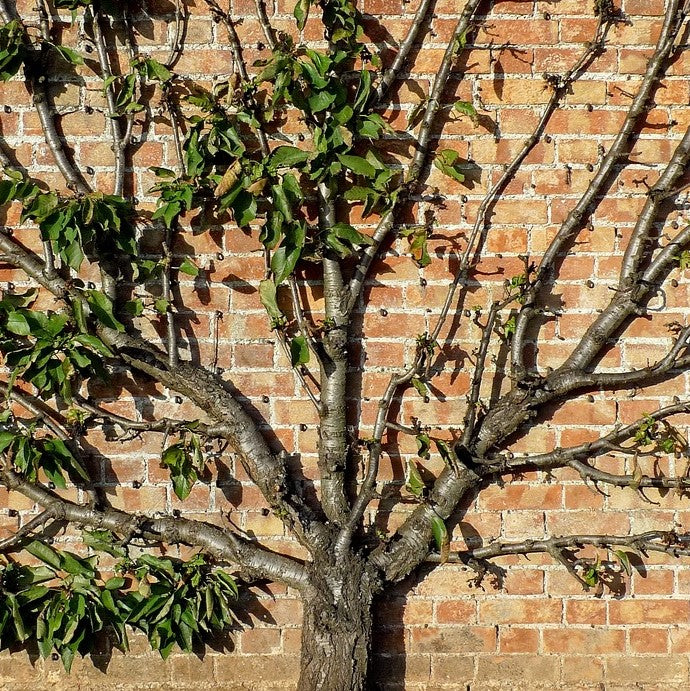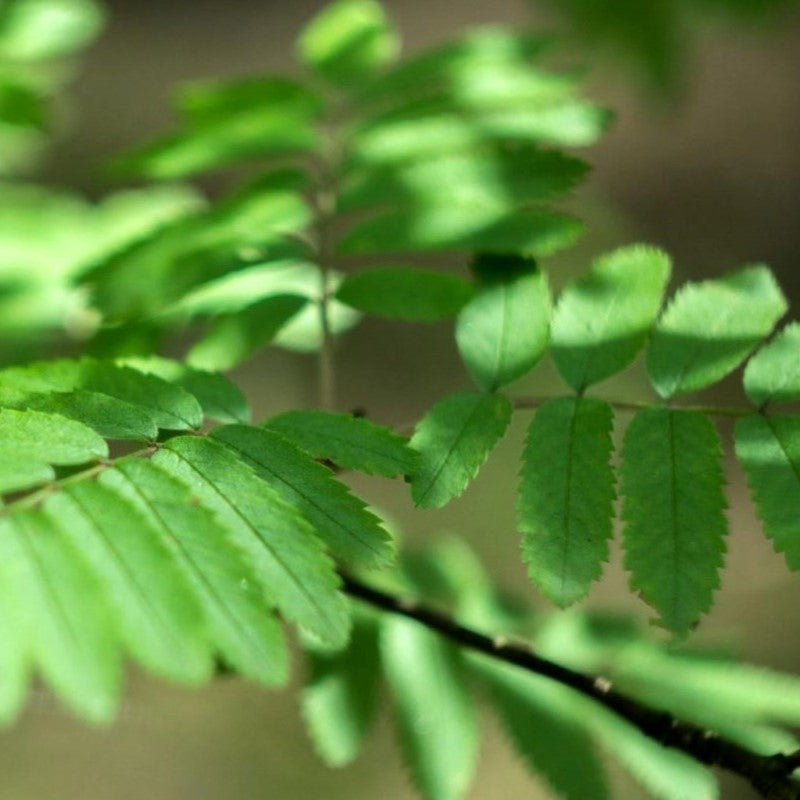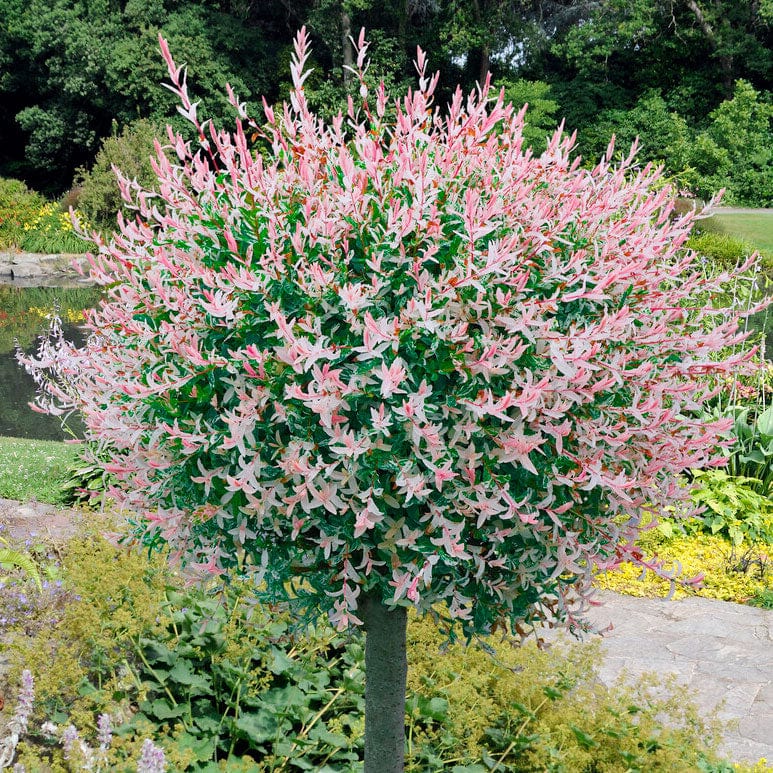Advice & Inspiration
Flamingo Trees: The UK’s New Favourite Willow?

The collective noun for a group of flamingos is a flamboyance and when you look at this willow tree, flamboyant is exactly the right word! Salix integra 'Hakuro-nishiki', or, the flamingo willow tree, has taken gardens by storm over the past few years, and it’s not hard to see why.
With its multicoloured foliage, neat and compact habit, and pollinator and award-winning status, this tree is an ornamental powerhouse. In this post, we’ll be looking at it in more detail, and examine why exactly (beyond its look and credentials) it’s garnered such attention in recent times. Right, what’s so special about this tree then?
Jump to:
- What does it look like?
- Where does it come from?
- Has it always been this popular?
- How to grow a flamingo willow
- How to care for a flamingo willow
What’s the flamingo willow like?
A small tree, typically growing to just two metres tall, the flamingo willow is most often sold as a standard, which gives it an adorable lollipop shape, perfect for patio pots, doubling up and standing guard outside a doorway, or featured at the heart of a small lawn.
Its foliage emerges in spring a lovely pink colour, before taking on variegated, creamy shades and becoming greener as summer rolls around. When the deciduous leaves fall from the tree in autumn, vivid orange stems are left behind to continue the visual impact.

Credit: Flickr
Where does the flamingo tree come from?
The flamingo tree is thought to be a sport (mutation) of the dappled willow and was first discovered in 1996, at Salixkwekerij Bontekoe, in the Netherlands. Subsequent testing showed the variety passed on its features to successive generations and an application for a patent was filed almost two decades ago, back in 2005.
The dappled willow itself, from which ‘Flamingo’ branched off – pun absolutely intended – is native to Korea, Japan, China and a small corner of Russia. If you want a fun little fact about willow trees, and let’s be honest why wouldn’t you, then how’s this; Chinese buddhists believed that willow branches helped drive away evil spirits. And how could there possibly be any evil around with a tree as charming as the flamingo willow growing in your garden?
Has the flamingo willow always been this popular?
The short answer, no! The flamingo tree’s star has been rising steadily over the past couple of decades, and while it’s hard to know what exactly has driven this increase (I’d wager it’s simply because more people know and are talking about it), one thing we do know for certain is interest in this tree has exploded.
Using Google Trends, you can see that spring this year marked peak interest (100) for the search term flamingo willow, with the graph ticking consistently upwards from as far back as the data is available.
This seems to be backed up by anecdotal evidence, too, with more supermarkets (like ASDA) and online retailers seeming to stock the tree than in previous years. Here at Roots, we’ve been stocking this tree since we started and it’s consistently been a customer favourite.
How to grow a flamingo willow
Flamingo willow trees are pretty undemanding and will be happy in most soils, provided that it is well-drained (but retaining some moisture). You should plant your tree in full sun or dappled shade, and you can also grow it in a roomy container. If you’re container-growing your tree, then use a compost like John Innes No.3.
How to care for a flamingo willow
Watering
You’ll need to water your tree fairly regularly throughout its first growing season to help it establish. This is particularly important in hot, dry spells. Willow trees are pretty thirsty customers and don’t like their soil to dry out, so it’s always better to err on the side of watering too much than too little. If the leaves are wilted, crispy or turning brown, then it’s a sign your tree needs a drink.
Feeding
Each spring, give your flamingo tree a feed with a general-purpose, balanced fertiliser to keep it happy and healthy. Mulching can also be beneficial around this time to suppress weeds and keep more moisture locked in.
Pruning
Pruning is nice and easy for the flamingo tree, all you need to do is remove dead or damaged shoots, and cut back growth by about a quarter to a third. You should aim to do this towards the end of winter.
Final thoughts
For the longest time, if you asked someone what their favourite willow tree was they’d almost certainly have said the traditional weeping willow; a tree ubiquitous with meandering rivers and Kenneth Grahame’s beloved children’s novel.
Today, though? I’m not so sure… The flamingo willow is making a pretty strong claim for being the nation’s favourite willow and, honestly, I’m not at all mad about it!




















